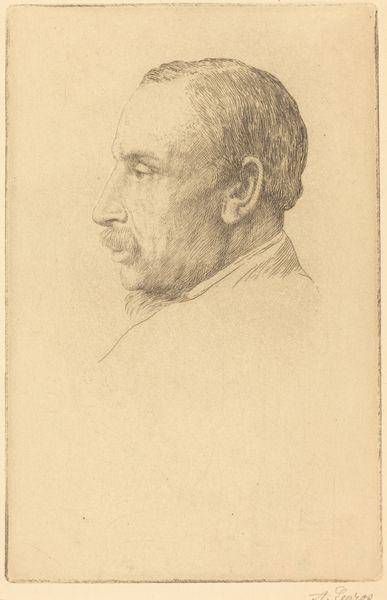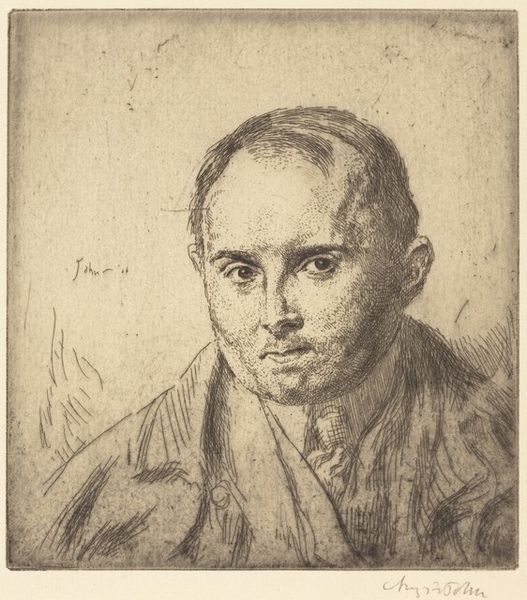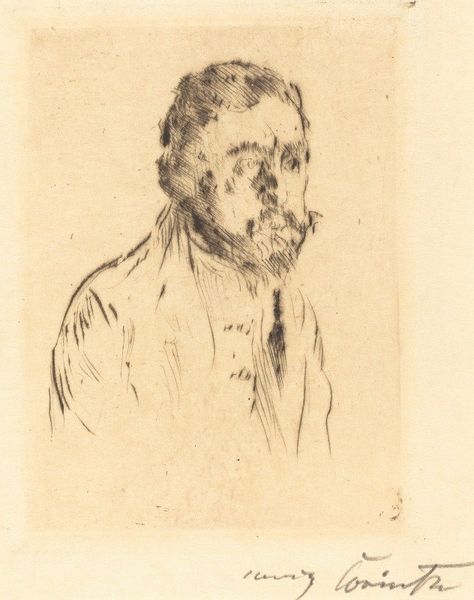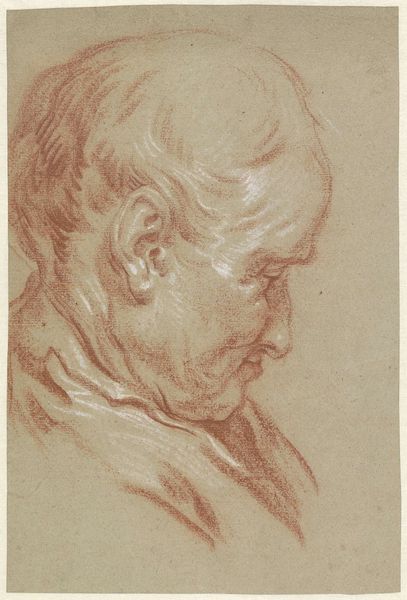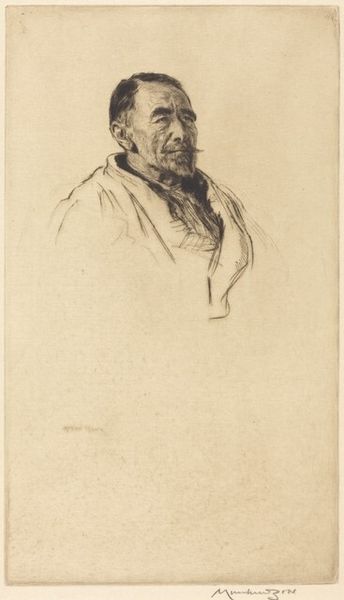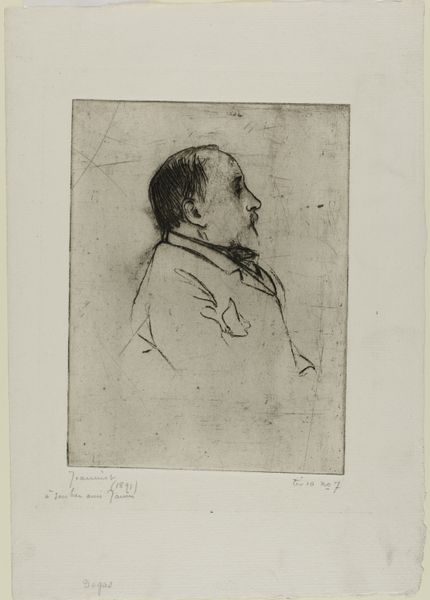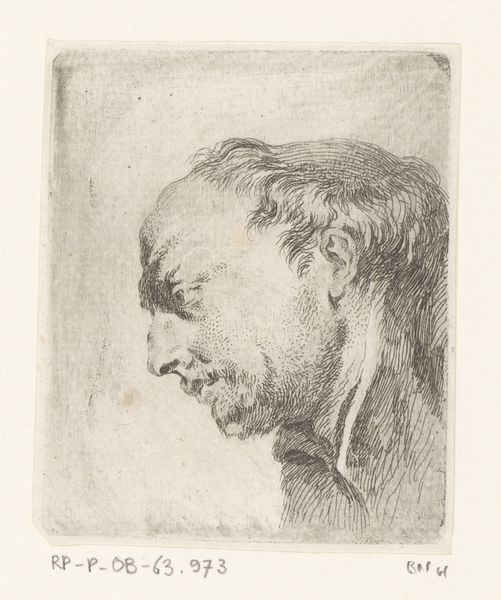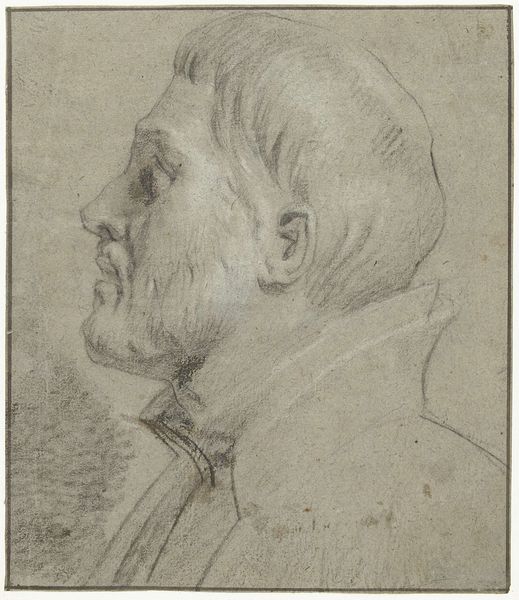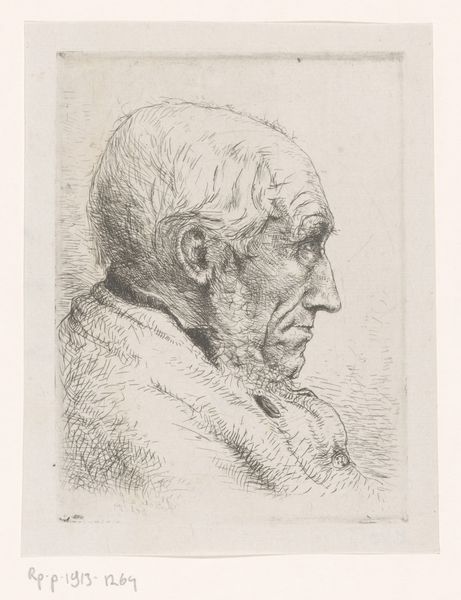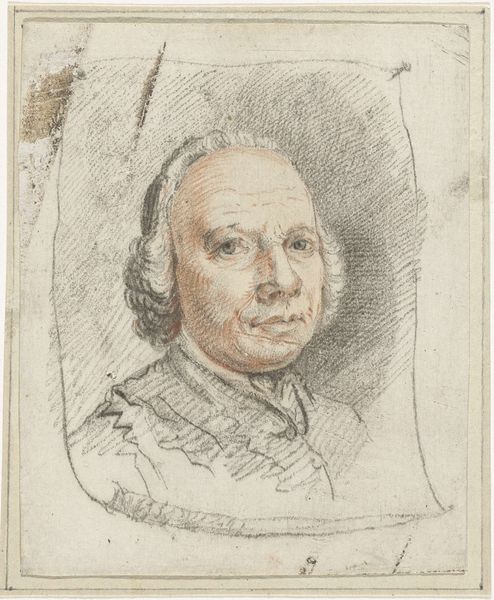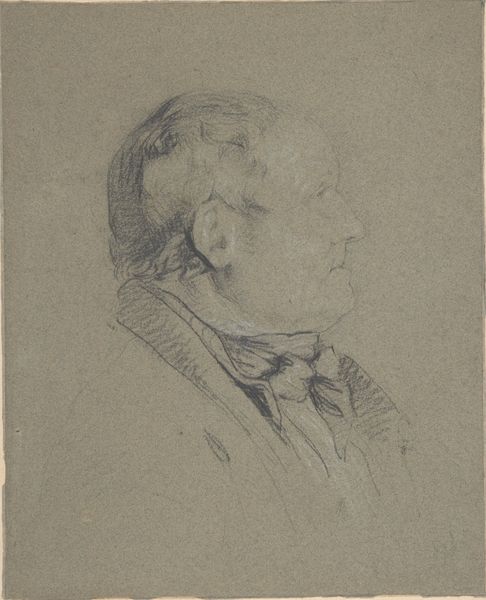
drawing, print, etching
#
portrait
#
drawing
#
toned paper
# print
#
pen sketch
#
etching
#
pencil sketch
#
old engraving style
#
personal sketchbook
#
ink drawing experimentation
#
pen-ink sketch
#
sketchbook drawing
#
portrait drawing
#
sketchbook art
Copyright: National Gallery of Art: CC0 1.0
Curator: Looking at Augustus John's "Head of Stephen Granger," likely from 1906, an etching that seems so vulnerable, somehow. Editor: Vulnerable, yes, but also powerfully stoic. It’s like a study in restrained grief, wouldn’t you say? It evokes a profound sense of introspection. Curator: Precisely! And rendered with such economy. You know, John was a master of suggestion; that’s the genius of this piece. Editor: Economy maybe a reflection of the time. Portraits, then, were more than just likenesses, especially those of working-class people like Stephen Granger; they were often declarations of presence, demanding visibility and respect. Do you know anything about the relationship between the artist and the subject here? Curator: Not specifically for this etching, but John often drew from the world around him; he thrived on these connections and the casual meetings. His portraits often seem to hint at the life lived beyond the frame. One could also imagine, given John’s, ahem, romantic entanglements, that it could be born of other personal motives. Editor: Interesting point! Could it be a form of intimate social commentary, capturing the shifting societal currents through an individual’s face? We have to ask ourselves, why memorialize *this* person, in *this* way, at *this* moment? The stark medium reinforces the austerity. Curator: True, the etching itself adds to that, doesn't it? I see the etching and its stark lines and immediately picture the artist in the middle of the night hunched over his work fueled only by a lamp and pure emotion, almost in a trance… Editor: And you get that because etching lends itself to such immediacy, while still retaining this quality of reproducibility. That reminds me that artistic movements such as Realism, in this era, used art specifically to portray unvarnished lives, and they gained a lot of traction with more progressive viewers. John's style reflects this as well. Curator: The bareness certainly invites us to fill in the blanks and think deeper on these points. A subtle little etching, teeming with the world in which it was created! Editor: It reminds us that art is not just reflective but participatory; its incompleteness challenges us to question and, ultimately, to see.
Comments
No comments
Be the first to comment and join the conversation on the ultimate creative platform.
